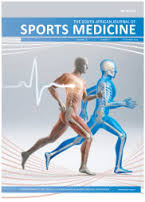Prevalence of the relative age effect among high-performance, university student-athletes, versus an age-matched student cohort
DOI:
https://doi.org/10.17159/2078-516X/2022/v34i1a13310Abstract
Background: Relative age effect (RAE) refers to the overrepresentation of athletes born earlier in the calendar year covering a specific sport. The RAE is especially prevalent in youth sports but often persists into senior competitive levels.
Objectives: To determine the prevalence and magnitude of the RAE among student-athletes in a high performance (HP) programme at a South African university, according to year, sports code and sex, compared to the general student cohort.
Methods: Cross-sectional descriptive analysis of HP-studentathletes and an age-matched student cohort from 2016 to 2021. Birthdate data were extracted for the HP student-athletes (N = 950: men = 644, women = 306) and student comparison group (N = 47 068; men = 20 464; women = 26 591; not disclosed = 13). Differences were determined using Chi-squared and Fisher’s exact test. Residuals examined relative age quartile differences. The steps were applied across academic years, sport code and sex.
Results: The RAE was more pronounced among the student-athletes compared to the age-matched student cohort. The RAE was occasionally observed among the HP-student-athletes; however, the prevalence was inconsistent across the respective years under investigation and only noted in certain sport codes (i.e. swimming, rugby union and cricket). There were no sex differences among the HP student-athletes.
Conclusion: Where the RAE was noted, the selection bias favoured the relatively older student-athletes. The mechanisms for RAE are multifactorial and complex. A combination of factors, such as competition depth, the popularity and physicality of a sport and socialisation may be involved.
Downloads
Downloads
Published
Issue
Section
License
Copyright (c) 2022 South African Journal of Sports Medicine

This work is licensed under a Creative Commons Attribution 4.0 International License.
The South African Journal of Sports Medicine reserves copyright of the material published. The work is licensed under a Creative Commons Attribution 4.0 (CC BY 4.0) International License. Material submitted for publication in the South African Journal of Sports Medicine is accepted provided it has not been published elsewhere. The South African Journal of Sports Medicine does not hold itself responsible for statements made by the authors.
How to Cite
- Abstract 423
- PDF 451






.png)